Index
GTX 670 FTW Signature 2 comes with a new dual-fan cooler, whereas all previously introduced EVGA GTX 670 series cards were equipped with a blower style cooler. The picture below first shows the GTX 670 FTW Signature 2, followed by the GTX 670 Superclocked.
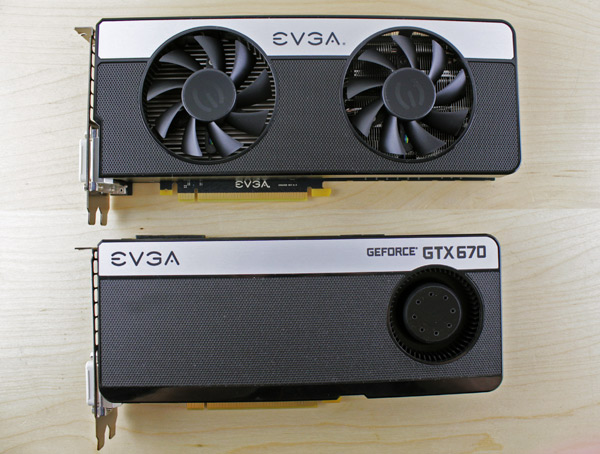
EVGA uses the reference PCB design for the GTX 670 Superclocked, but for the GTX 670 FTW and GTX 670 FTW Signature 2 the company threw in the GTX 680 PCB. Note that doing this was not too difficult, since both the GTX 680 and GTX 670 use the GK104 GPU and identical memory subsystems. The picture below shows PCB designs for the GTX 670 FTW Signature 2, followed by the GTX 670 Superclocked.
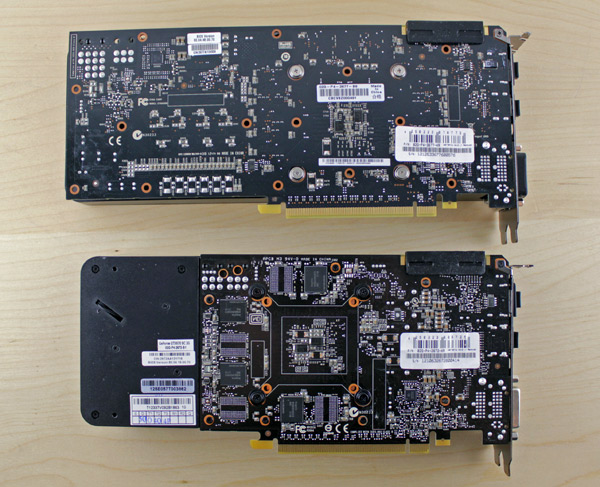
GTX 670 FTW Signature 2 is 25,4cm long, just like the GTX 680, while the reference GTX 670 is 24cm long. We said that the GTX 670 FTW Signature 2 uses GTX 680’s board design and this picture shows how similar the two cards really are (GTX 670 FTW Signature 2 vs. GTX 680 Superclocked Signature 2).
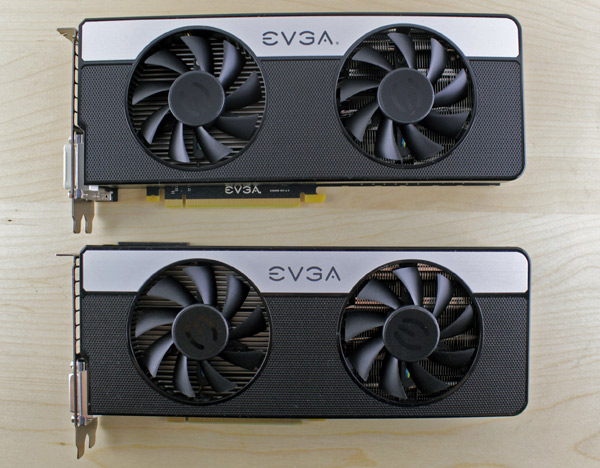
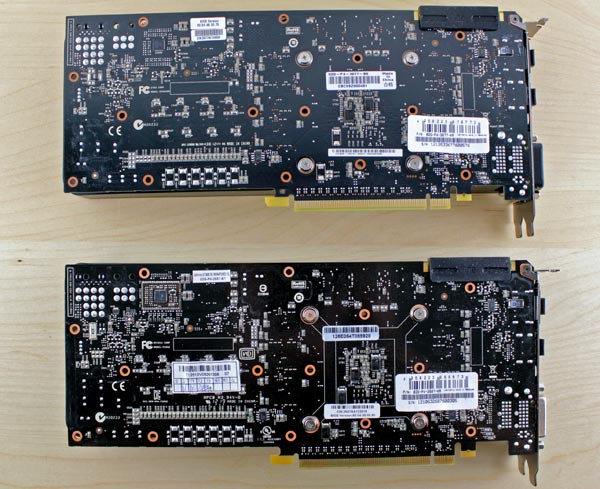
A careful observation of the back reveals some differences, mostly in power supply design. The GTX 680 draws more power and it comes with one 6-pin and one 8-pin power connector, while the GTX 670 FTW Signature 2 draws power via two 6-pin power connectors, just like the reference GTX 670 card.
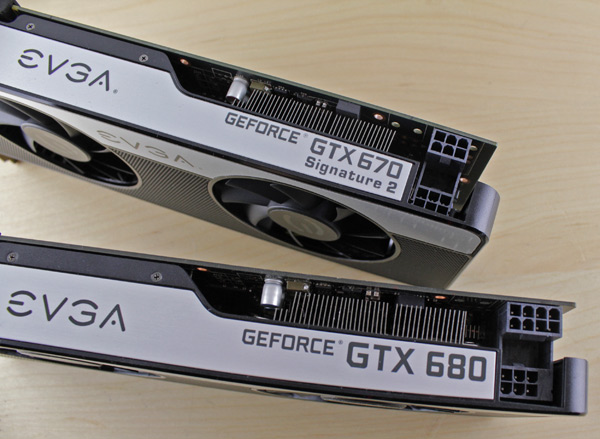
The mesh finish on the Signature 2’s cooler looks quite attractive, but it is also a magnet for dust. It’s nothing that a quick blast of compressed air won’t sort out. On the Signature 2 cooler EVGA went for two 75mm fans and we are happy to report that they are very quiet.
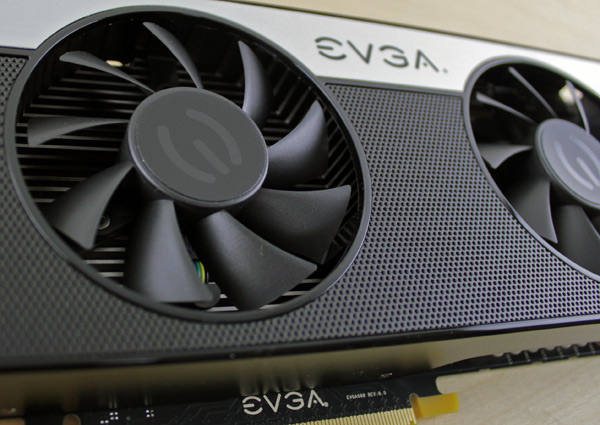
EVGA’s GTX 670 FTW Signature 2 packs a total of 2GB of GDDR5, in eight memory modules. EVGA overclocked the memory to 1552MHz (6208MHz effectively).
The Signature 2 card comes with two dual-link DVI outs, but only one is analog VGA-out capable. EVGA made things easy by marking the VGA-capable out with “DVI-I”. The plastic caps are also a nice touch. The I/O panel also features standard HDMI and DisplayPort connectors. Nvidia wanted to make sure that it does not lag behind the competition in multi-display support, so Kepler based cards can run up to four displays simultaneously.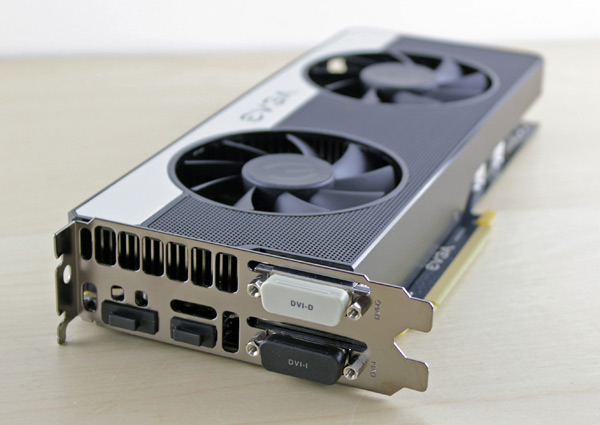
The air exhausts are somewhat bigger than on the reference card. This allows for better airflow, which means hot air will exit the card faster and in turn help the cooler perform a bit better.
GTX 670 FTW Signature 2 graphics cards come with two SLI connectors, which means it’s possible to daisy chain up to four GTX 670 cards for some serious power.



